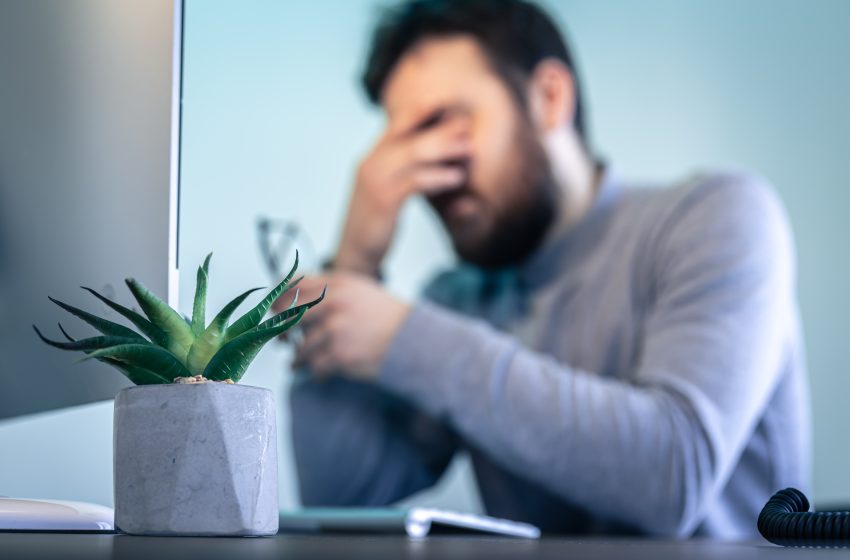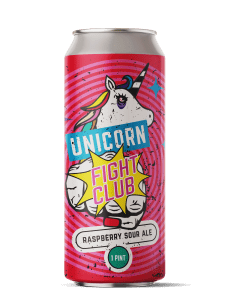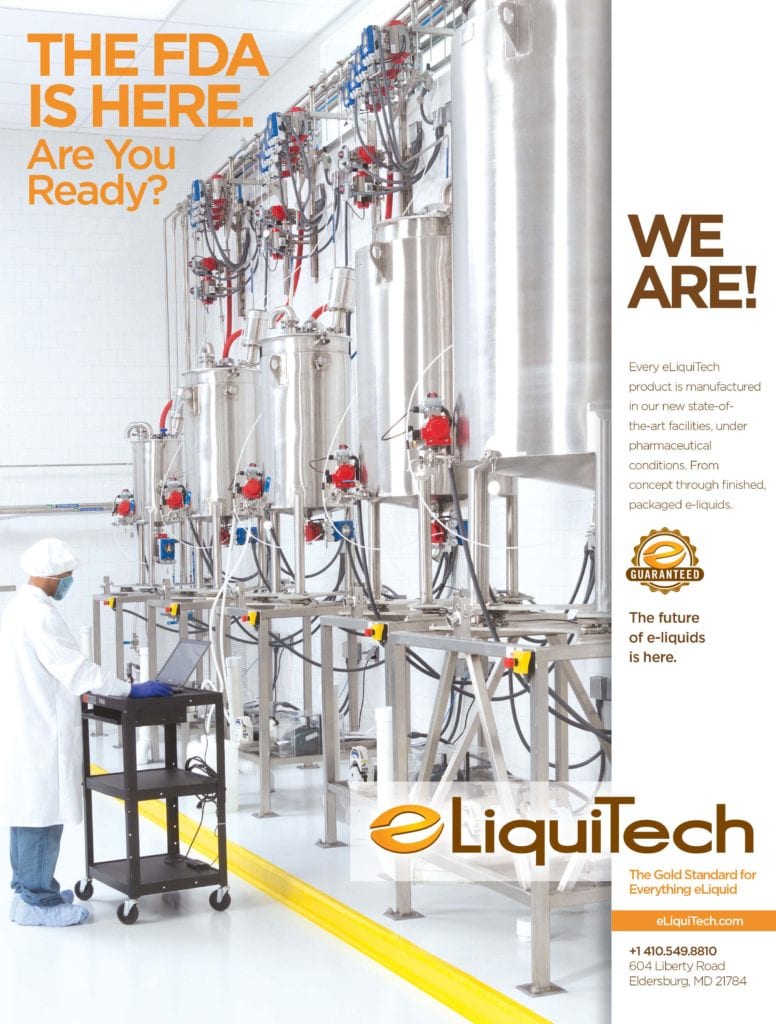Cartoonish Response
- Regulation This Issue
- August 26, 2023
- 18 minutes read

Credit: Puhimec

When it comes to advertising, vaping and alcohol have separate standards of regulation.
By George Gay
Here are a couple of newspaper quotes worth comparing:
“Marked with a label showing a cartoonish red beast [my emphasis] in shorts and high socks wielding some glasses, Chin Chin has become the wine of now, the Casillero del Diablo of Gen Z, relatively affordable, instantly recognizable, and it looks good on Instagram.”
“One of the recommendations was closing the loophole on free samples, but others included considering banning the online sale of vapes, banning cartoon characters [my emphasis] or images appealing to young people from vaping products ….”
The first quote is from a piece in the U.K. edition of The Guardian newspaper of May 8, “Chin Chin! The party drink putting fizz into summer”;the second is from a piece in The Guardian of May 31, “New laws for vaping mooted to deter sale [sic] to children.” The May 8 story was promotional; the May 31 story was denunciatory.
Yes, hypocrisy is alive and well. Apparently, according to The Guardian, cartoon characters on vaping products, never known to have killed anybody in the U.K. as far as I am aware, are beyond the pale, but a cartoon character on alcohol, the biggest risk factor for death, ill health and disability among people 15–49 years of age in the U.K., is just tickety-boo.
The Guardian has seemed lately to take every opportunity to issue dire warnings about unproven risks related to vaping, a habit that is helping many people to quit smoking, while it treats alcohol as a product worth promoting and drunkenness as just a bit of fun. On May 4, it ran a story under the headline “Solved: Why bubbles in champagne follow a straight line, unlike people who drink it.”
While I would admit there is something comical about a person staggering down the pavement under the influence of alcohol, seeing him step into the path of an oncoming vehicle is less so. And according to a National Institutes of Health study, “The most numerous group of road accident fatalities among pedestrians are men, with a particular emphasis on men under the influence of alcohol.”
It seems to me that The Guardian, a newspaper I have read daily for 40 years and that I generally admire, is lending its voice to the forces of those trying to ban vaping and generally undermine tobacco harm reduction in the U.K., something I find puzzling since the paper takes what I would describe as a generally liberal attitude to the use of recreational drugs.
Indeed, as I have indicated, it promotes alcohol. The Chin Chin story, cartoon character and all, took up about three-quarters of a right-hand page. The paper runs adverts for alcohol, and each week, it devotes a page of its half-page-format Feast magazine to the promotion of alcohol. On June 17, it included in its Saturday edition a 36-page supplement on Food and Drink, which probably should have read “Drink and Food,” partly because most of the front page was taken up with a picture of “this season’s hottest cocktail.”
Ironically, in a different section of the same paper, a book reviewer described how Drug Science, an organization set up by neuropsychopharmacologist professor David Nutt, had, in the past, published a table showing the relative risks of different drugs in which alcohol was rated by far the most dangerous.
It’s not that The Guardian doesn’t think about the ethics of what it does. In its June 16 edition, it announced a global ban on gambling advertising, arguing it was “unethical to take money from services that can lead to ‘addiction and financial ruin.’” The announcement, in my opinion, was nuanced and demonstrated that the paper’s position was not judgmental toward those who wanted to bet occasionally.
But vaping is not given a similarly fair hearing. The significant volume of negative vaping stories the paper carries and the way the stories are presented indicates to me a lack of objectivity over this issue. Here is one example taken from a story on June 6, “Disposable vapes should be banned to protect children, U.K. pediatricians say.” In this piece, the paper references Action on Smoking and Health (ASH) just once: “Action on Smoking and Health data also shows that experimental use of e-cigarettes among 11-to-17-year-olds is up 50 percent on [that of] last year.”

This quote is taken from the 2023 ASH-commissioned YouGov survey published online in May, “Experimental child vaping up significantly since 2022 but not current vaping.”1 It is based on the second bullet point of four that open the document, but the significant thing is that the story makes no reference to the first bullet point: “No significant change between 2022 and 2023 in the proportion of 11[-year-olds to] 17-year-olds currently vaping or smoking.”
There is no reference either to the statement made further down in the document: “However, fears that vaping is leading a whole generation to be addicted to nicotine are not justified by the evidence to date.”
What is happening here? I suspect that for some reason, The Guardian has picked up on the moral panic centered on “children” and “kids” that was whipped up in the U.S. and that proved successful in throwing doubt on whether it was appropriate to use vaping as a tool to quit smoking and decided to run with it.
I say this because what is striking is that there seems to be little interest at The Guardian in respect of the issue of tobacco smoking among young people, an activity that should be much higher up the agenda of concern. Why is this? Could it be that, as in the U.S., the vaping-and-children issue has risen to the top because it is the “children” of the financially better off who are vaping?
Let me be clear. I do not have a shred of evidence to support this speculation, but I think it is worth asking questions along these lines. Could it be that the offspring of financially impoverished people who tend not to have a public voice are still smoking tobacco while those of financially more secure parents who tend to be pushier have moved on to vaping?
If I am correct, nobody needs to be surprised because such a divide would be in line with what has become the natural order in the U.K., where the large and growing number of young people from disadvantaged backgrounds are to be found at the back of the queues when it comes to food, basic hygiene products, good health outcomes, clothing, education, recreational opportunities, employment prospects … well, you name it.
But, circling back to the question of alcohol, I don’t want to be unfair because The Guardian does occasionally run a negative piece on drinking. On May 24, for instance, it carried this story: “Government’s failures on alcohol have led to health crisis, say MPs.” Below are the first two paragraphs of that story, which was by Andrew Gregory, health editor:
“The government’s failure to tackle alcohol harm in England has caused a public health crisis affecting millions of people, according to a damning report by the public accounts committee published today,” the story stated.
“Problem drinking is fueling violent crime and costing the NHS [National Health Service] and wider society [GBP]25 billion a year, with deaths almost doubling in two decades, the report says. Ministers are accused of slashing funding for support services by hundreds of millions of pounds while breaking promises of action and ditching policies aimed at resolving the crisis.”
Two questions arise, I think. Why, when it is clearly aware of this stuff, does The Guardian promote alcohol and drinking and, indirectly, violent crime? And can The Guardian be surprised with what has been happening when the U.K. Parliament operates out of subsidized bars with attached debating chambers?
Another reason why I believe The Guardian’s coverage amounts to a campaign against vaping is that its stories drag in a lot of issues in support of its take on underage vaping that, while important, need to be addressed separately. The stories embrace such issues as illicit products, illegal sales and the environment, but no attempt is made to get to the root of these issues.
For instance, I would have thought it would have been worthwhile asking why the U.K. is seemingly awash with noncompliant vaping products. I would have thought it would have been worthwhile asking why retailers can apparently sell vaping products to underaged customers with near impunity. And I would have thought it would have been worthwhile asking whether underage people are the victims, the villains or both in respect of the environmental harms being caused by carelessly discarded vaping devices, especially “single-use” devices.
But even I found that such issues took a back seat when, on June 14, The Guardian’s coverage of vaping took an even worse turn. On that day, the “children”-and-vaping issue was relegated to a double-page spread in G2, which styles itself as the Life and Arts section of the paper. That’s a bit of a push. Most serious reviews seem to be presented in the news section of the main paper.
G2 is more about entertainment. There’s the television guide, some often light-hearted columns and a regular turnaround of pieces on how to sleep better, how to improve your sex life, how to eat more-nutritional food, how to understand your companion animal … oh yes, and, of course, there are the interviews with celebrities who have active agents and a book, film or album coming out and that always start with Joe Bloggs talking to Eoj Sgolb about … (insert three words from the list of drugs, loss, love, sex, drink, rehab …).
OK, I’m sure you know the sort of stuff. Harmless, perhaps, but G2 is not the sort of vehicle, I would have thought, for a discussion of vapes, whose primary purpose is to help shift smokers from their highly risky habit with its high cost to society in general and, especially, to the under-pressure NHS. But then, perhaps I am being unfair because The Guardian, which has otherwise undertaken some serious and important journalism, alone and in conjunction with other outlets, possibly doesn’t believe the vaping issue is serious. Certainly, in relegating it to the G2, it seems to have shown its hand; it believes the “children”-and-vaping issue is entertainment.
The first two-thirds of the opening page of the G2 splash was taken up with a close-up picture of somebody wearing a hoodie and holding a vape, a picture the art department had done its best to make look sinister. In fact, the picture tends to support the idea that we are dealing with a middle-class issue.
The hoodie is neat and clean, and underneath it (to indicate we are looking at a young person) you can see a smart shirt and what looks like a school tie, part of a uniform many financially impoverished people could not afford. The top button of the shirt is done up and the tie neatly secured. The fingers shown holding the vape are definitely not tattooed with H A T E.
In fact, in this guise, vaping has been relegated not only to entertainment but to something resembling a poorly scripted soap opera. The June 14 story was headed “Mum, I can’t go any longer —I really need a vape.” This plaintiff cry was apparently issued from the lips of 16-year-old Josh, who was taking exams, and the reaction of his mum, Hannah, was apparently to break the law and buy him a vape—only this once, she was quoted as saying, rather implausibly. There was no discussion in the story as to whether Hannah would have bought other drugs if Josh had said he needed amphetamines, cocaine or heroin.

Notwithstanding Hannah’s seeming lack of judgment, she is given a platform on which to expound her assumed expertise on addiction and relative addiction, whatever that might be. At one point, Hannah tells us Josh is “massively” addicted while later, she says he is more addicted than she thought, which presumably takes him into massively addicted-plus territory.
In fact, the June 14 soap was the second episode of the story that had started with what I would describe as a shamefully bad piece The Guardian ran in its main section on March 18—unbelievably on page 5. In the earlier piece, we were told about 14-year-old Liam, who, according to his mother, Sarah, was “completely addicted to vaping,” which raises the question of whether it is possible to be incompletely addicted. Sarah’s reaction? Apparently, to break the law and feed her son’s habit.
The soap’s two episodes are closely similar in format, with drawers full of vapes and seemingly naive, inadequate, middle-class parents blaming others for their offspring’s behavior. They admit to the apparent illegal purchase of vapes for their underage offspring, presumably their nearest and dearest, but complain about retailers, unrelated to the young people, selling them vapes.
And all the while these parents eschew any responsibility for their own actions or those of their offspring, preferring to present themselves as victims. I’m sure they would be shocked to learn that one of the main risk factors of drug-taking among young people is a lack of parental supervision while others are genes and alcohol “misuse” by parents.
But who are these victimizers? Having read columns of this stuff, I’m still not clear who these parents and The Guardian believe are to blame for the current situation as they see it. There is little attempt to get to the bottom of these issues, which seem to me to stem simply from acute and chronic government-imposed austerity measures that, predictably, have led to a failure of policing.
1 https://ash.org.uk/media-centre/news/press-releases/experimental-child-vaping-up-significantly-since-2022-but-not-current-vaping

